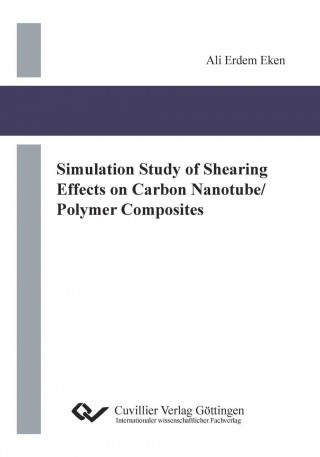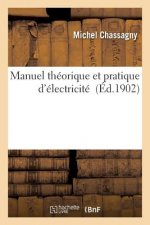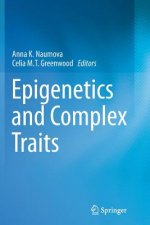
Dostawa
Doradca ds. zakupów
16 127 528 książek w 175 językach







Pokaż wszystkie języki (175)





Jednak się nie przyda? Nic nie szkodzi! U nas możesz zwrócić towar do 30 dni
 Bon prezentowy
O dowolnej wartości
Bon prezentowy
O dowolnej wartości
Bon prezentowy to zawsze dobry pomysł. Obdarowany może za bon prezentowy wybrać cokolwiek z naszej oferty.
Simulation Study of Shearing Effects on Carbon Nanotube/Polymer Composites
 Angielski
Angielski
 67 b
67 b
30 dni na zwrot towaru
Mogłoby Cię także zainteresować


During processing of carbon nanotube (CNT)/polymer composites, materials are exposed to significant deformation that changes the microstructure and affects the properties of the final products. In order to improve the material properties and manufacturing process, a clear understanding of how these materials react to the flow fields is required. Single carbon nanotubes cannot be observed during processing with commercial characterization methods. Therefore simulations are the only way to get insight the movement of the carbon nanotubes in polymer melts. In this thesis, fiber-level simulation technique is employed to simulate CNT/polymer composites in simple shear flow. This model incorporates CNT flexibility, irregular CNT equilibrium shapes and CNT interactions. The combined effects of carbon nanotube properties such as aspect ratio, curvature and tunneling length, as well as shear rate on the microstructure and electrical conductivities of CNT/polymer composites are investigated. Electrical conductivities are calculated using a resistor network algorithm. Results for percolation thresholds in static systems agree with theoretical predictions and experimental measurements. Imposed shear flow decreases the electrical percolation threshold by facilitating the formation of conductive aggregates. In agreement with previous research lower percolation thresholds are obtained for nanotubes with high aspect ratio. The effect of nanotube shape is different for sheared and non-sheared suspensions. Increasing nanotube curvature increases the percolation threshold in the non-sheared suspensions while this effect is reversed in the sheared suspensions such that increasing nanotube curvature decreases the percolation threshold. Increasing nanotube curvature favors the formation of agglomeration in sheared suspensions which leads to network formation. Alignment studies show that when nanotubes are aligned, percolation threshold increases due to the decrease of tube-tube contact occurrence probability. Another prediction of the simulations is that a greater tunneling length causes a decrease in percolation threshold of CNT/polymer composites. Simulation results show that nanotube agglomeration is one of the key factors for the electrical conductivity in CNT/polymer composites such that an agglomerated structure is beneficial for high electrical conductivity which is consistent with experimental observations. The rate of imposed shear flow influences the composite conductivity by affecting the conductive aggregates. High shear rates causes destruction of the connected nanotube network and alignment of the nanotubes in the flow direction because of the enhanced flow aligning. But, at low and moderate shear rates, because of the dominance of nanotube aggregation mechanisms and very little orientation, higher conductivities can be achieved. We quantified agglomeration level for different concentrations, aspect ratios and nanotube shapes. Carbon nanotubes form weakly interconnected networks when low volume fractions, low aspect ratios or less curved nanotubes are used and these networks are sensitive to the shear flow because of low entanglement level. Increasing CNT concentration, aspect ratio or nanotube curvature make the connected network more robust and less sensitive to shear flow. Upon shearing at constant shear rate, the system attains a state with substantially constant electrical conductivity, nanotube orientation and agglomerate size that are a function of the applied shear rate. The state reached for a given shear rate is independent of the initial state of orientation and aggregation.
Informacje o książce
 Angielski
Angielski




 Jak kupować
Jak kupować
















